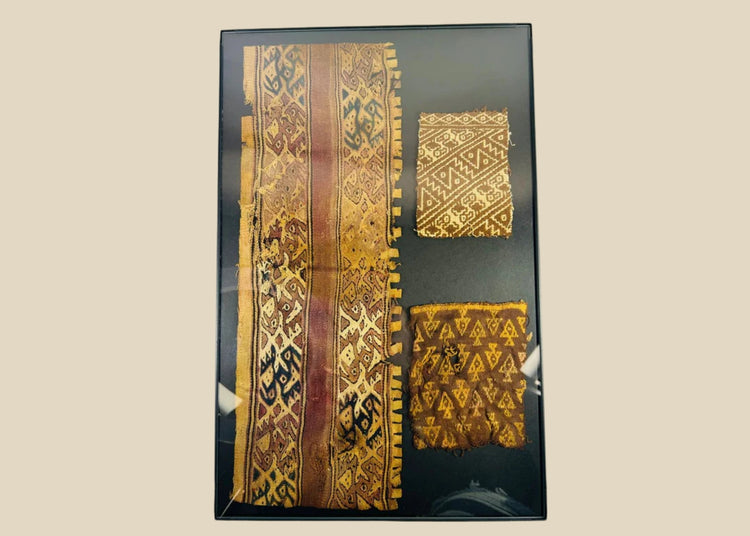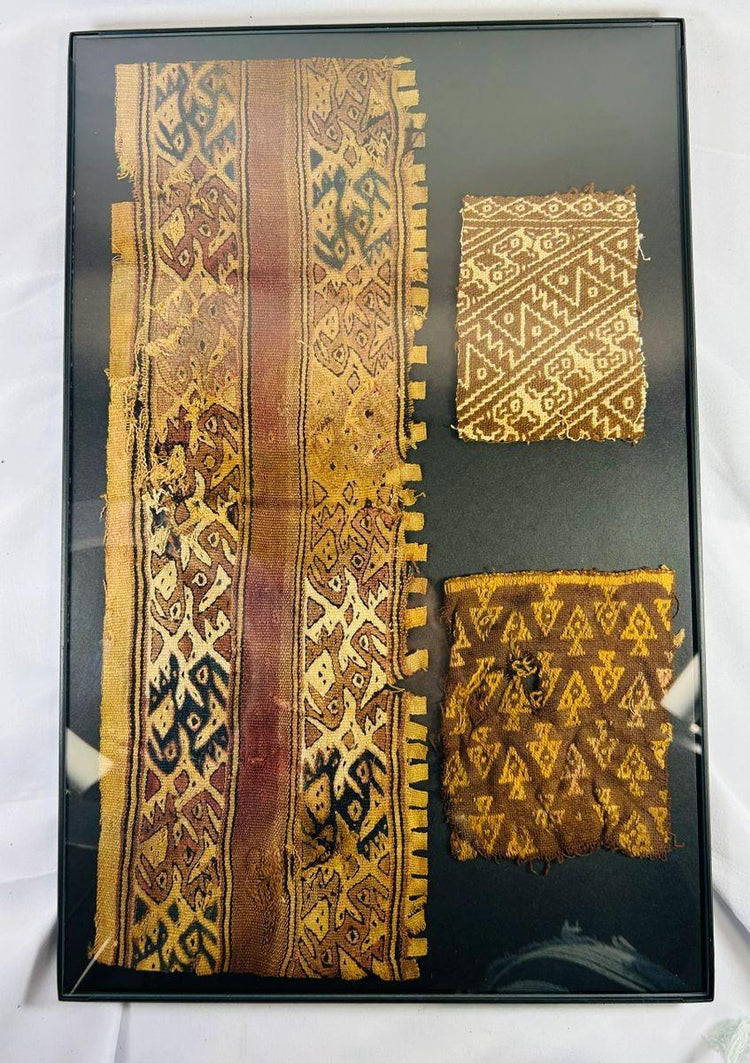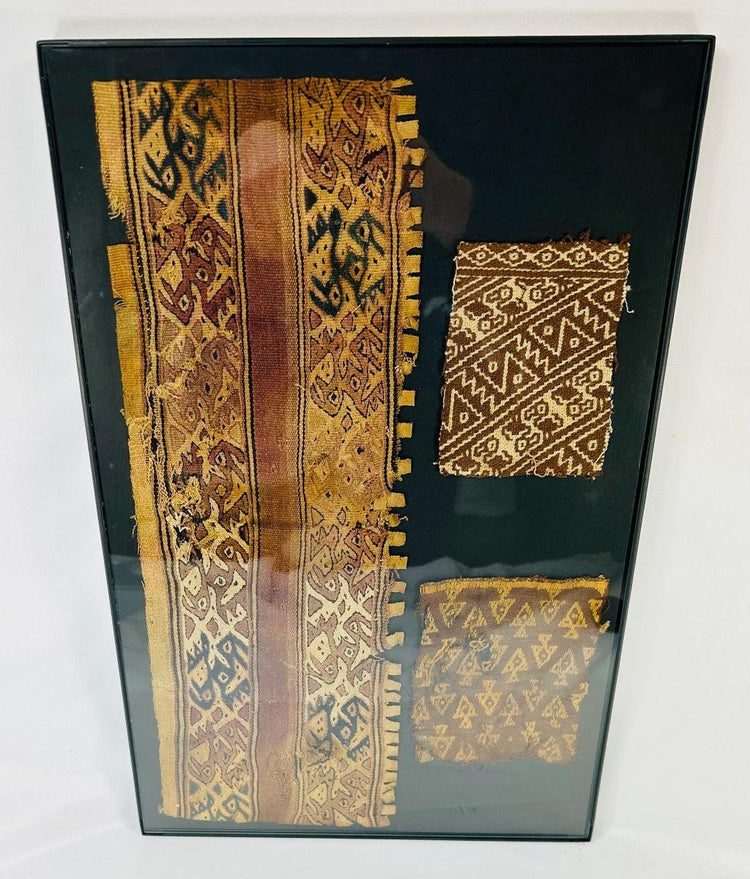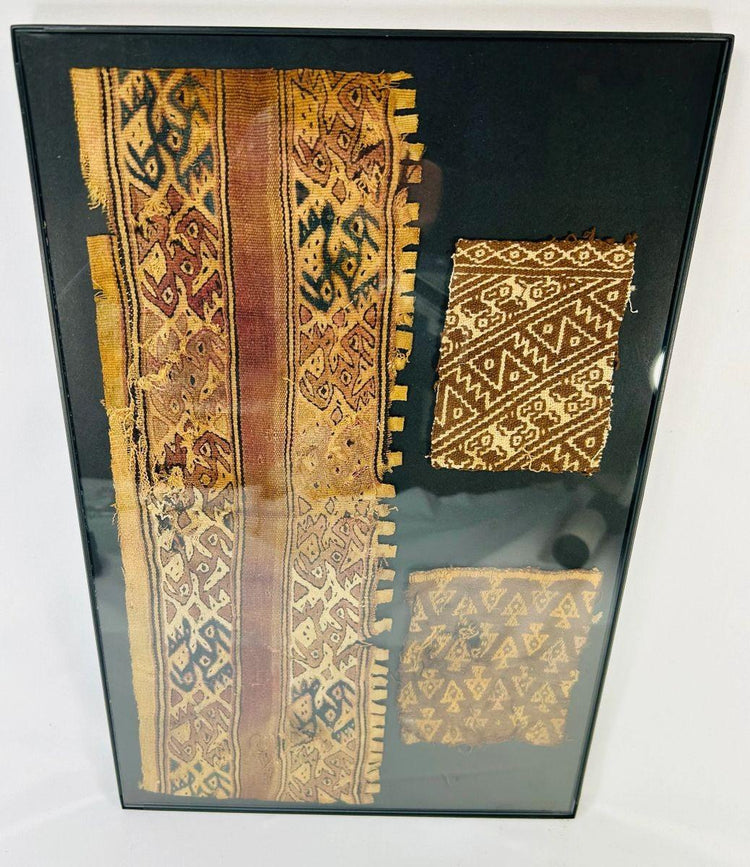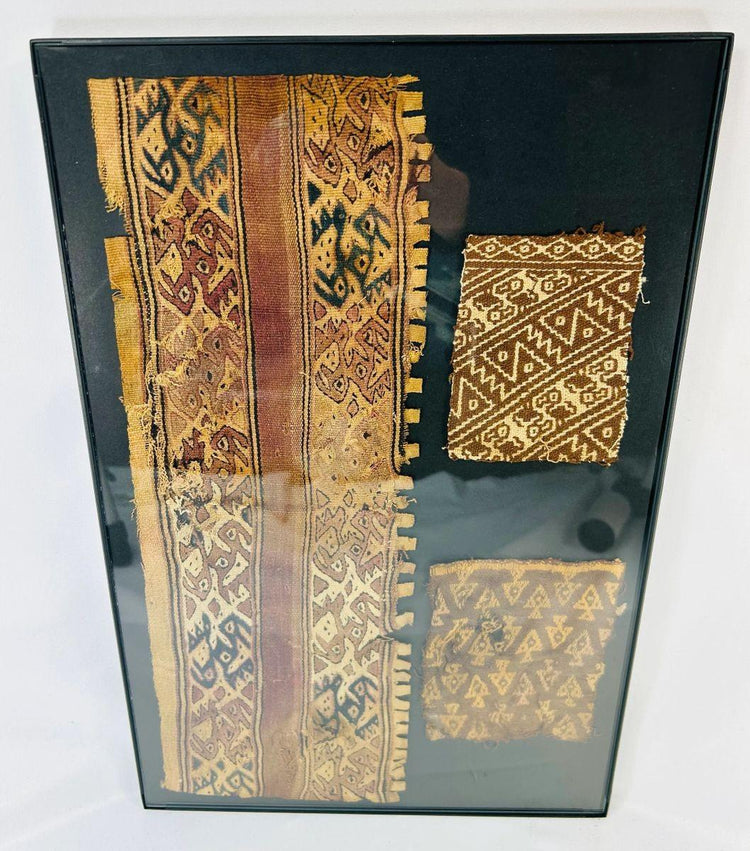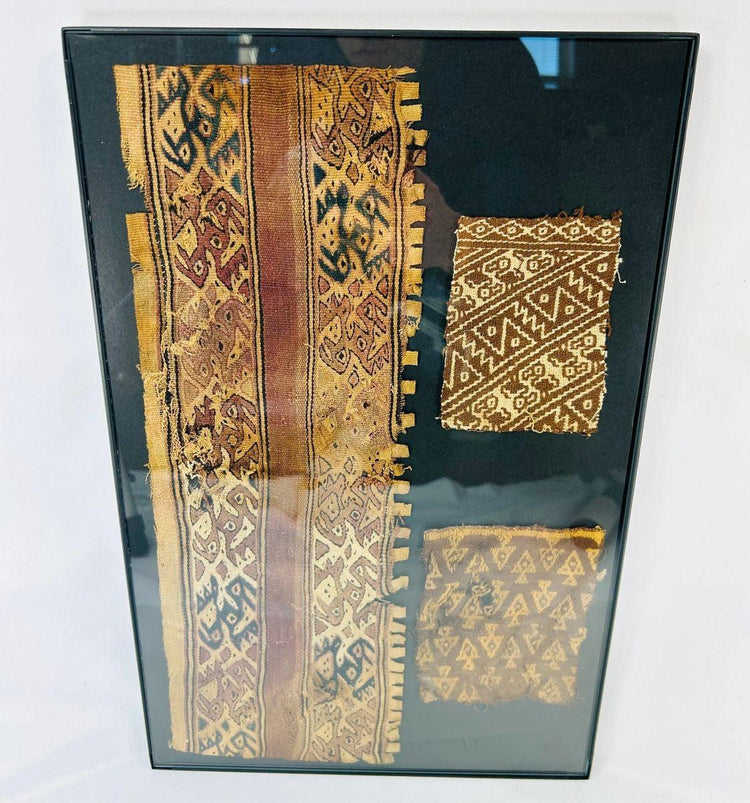Three | Ancient Peruvian | Textile Fragments | Circa 1000-1470 CE
Description
More
Less
Historical Context & Origin
Region: Central Coast of Peru
Material: Finely woven cotton fibers dyed with natural pigments
Period: Chancay Culture, Late Intermediate Period (1000–1470 CE)
Description
This remarkable set of textile fragments exemplifies the artistry of the Chancay civilization, a culture renowned for its mastery of weaving, geometric design, and symbolic expression. Originating from the central coast of Peru, these textiles reflect the importance of ritual garments and ceremonial cloths within Chancay society. Likely used in religious, funerary, or communal contexts, each fragment demonstrates both aesthetic refinement and cultural symbolism. Their preservation offers a rare opportunity to study the advanced techniques and cosmological motifs central to Chancay artistry.
Features
- First Fragment: Bold geometric and symbolic patterns in vibrant reds, yellows, and pinks, with a delicate twisted fringe suggesting use in ceremonial garments or ritual textiles.
- Second Fragment: Square design of zigzags and diamond motifs in beige against brown, exemplifying precise weaving and geometric balance.
- Third Fragment: Repeating triangular motifs in vibrant yellow on a brown background, reflecting the Chancay mastery of natural dyes and bold composition.
- Fiber Composition: Finely woven cotton fibers, dyed with pigments sourced from plants, minerals, and insects.
- Color & Dye: Remarkably vibrant hues preserved despite centuries of age, underscoring the skill of Chancay dyers.
Cultural Significance
The Chancay civilization was renowned for its elaborate textile production, which played a vital role in religious ceremonies, funerary rites, and expressions of cultural identity. The motifs—geometric, symbolic, and cosmological—likely represented deities, spiritual concepts, and aspects of daily life, offering both protection and meaning to their users. Such textiles were highly valued not only for their aesthetic qualities but also for their role as sacred and cultural objects.
Condition
The textile fragments display minor fraying at the edges and natural surface wear consistent with their great age. Despite this, the fibers remain structurally intact, and the designs are clearly visible. The preserved vibrancy of the colors highlights the durability of the materials and the exceptional skill of the Chancay artisans, while the signs of aging add authenticity and historical depth.
Dimensions (approximate)
Frame:
Height: 17 in
Width: 11 in
Age
Over 500 years old
Learn More
Explore the Art & Ritual Traditions of the Chancay People
Discover the Large Chancay Figural Effigy Urn in Our Collection
Description
Historical Context & Origin
Region: Central Coast of Peru
Material: Finely woven cotton fibers dyed with natural pigments
Period: Chancay Culture, Late Intermediate Period (1000–1470 CE)
Description
This remarkable set of textile fragments exemplifies the artistry of the Chancay civilization, a culture renowned for its mastery of weaving, geometric design, and symbolic expression. Originating from the central coast of Peru, these textiles reflect the importance of ritual garments and ceremonial cloths within Chancay society. Likely used in religious, funerary, or communal contexts, each fragment demonstrates both aesthetic refinement and cultural symbolism. Their preservation offers a rare opportunity to study the advanced techniques and cosmological motifs central to Chancay artistry.
Features
- First Fragment: Bold geometric and symbolic patterns in vibrant reds, yellows, and pinks, with a delicate twisted fringe suggesting use in ceremonial garments or ritual textiles.
- Second Fragment: Square design of zigzags and diamond motifs in beige against brown, exemplifying precise weaving and geometric balance.
- Third Fragment: Repeating triangular motifs in vibrant yellow on a brown background, reflecting the Chancay mastery of natural dyes and bold composition.
- Fiber Composition: Finely woven cotton fibers, dyed with pigments sourced from plants, minerals, and insects.
- Color & Dye: Remarkably vibrant hues preserved despite centuries of age, underscoring the skill of Chancay dyers.
Cultural Significance
The Chancay civilization was renowned for its elaborate textile production, which played a vital role in religious ceremonies, funerary rites, and expressions of cultural identity. The motifs—geometric, symbolic, and cosmological—likely represented deities, spiritual concepts, and aspects of daily life, offering both protection and meaning to their users. Such textiles were highly valued not only for their aesthetic qualities but also for their role as sacred and cultural objects.
Condition
The textile fragments display minor fraying at the edges and natural surface wear consistent with their great age. Despite this, the fibers remain structurally intact, and the designs are clearly visible. The preserved vibrancy of the colors highlights the durability of the materials and the exceptional skill of the Chancay artisans, while the signs of aging add authenticity and historical depth.
Dimensions (approximate)
Frame:
Height: 17 in
Width: 11 in
Age
Over 500 years old
Learn More
Explore the Art & Ritual Traditions of the Chancay People
Discover the Large Chancay Figural Effigy Urn in Our Collection
You May Also Like
















